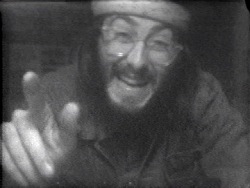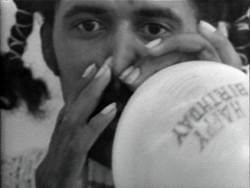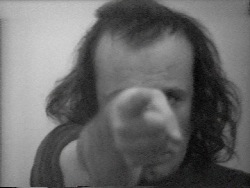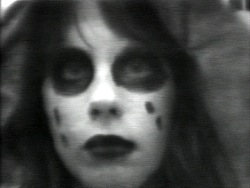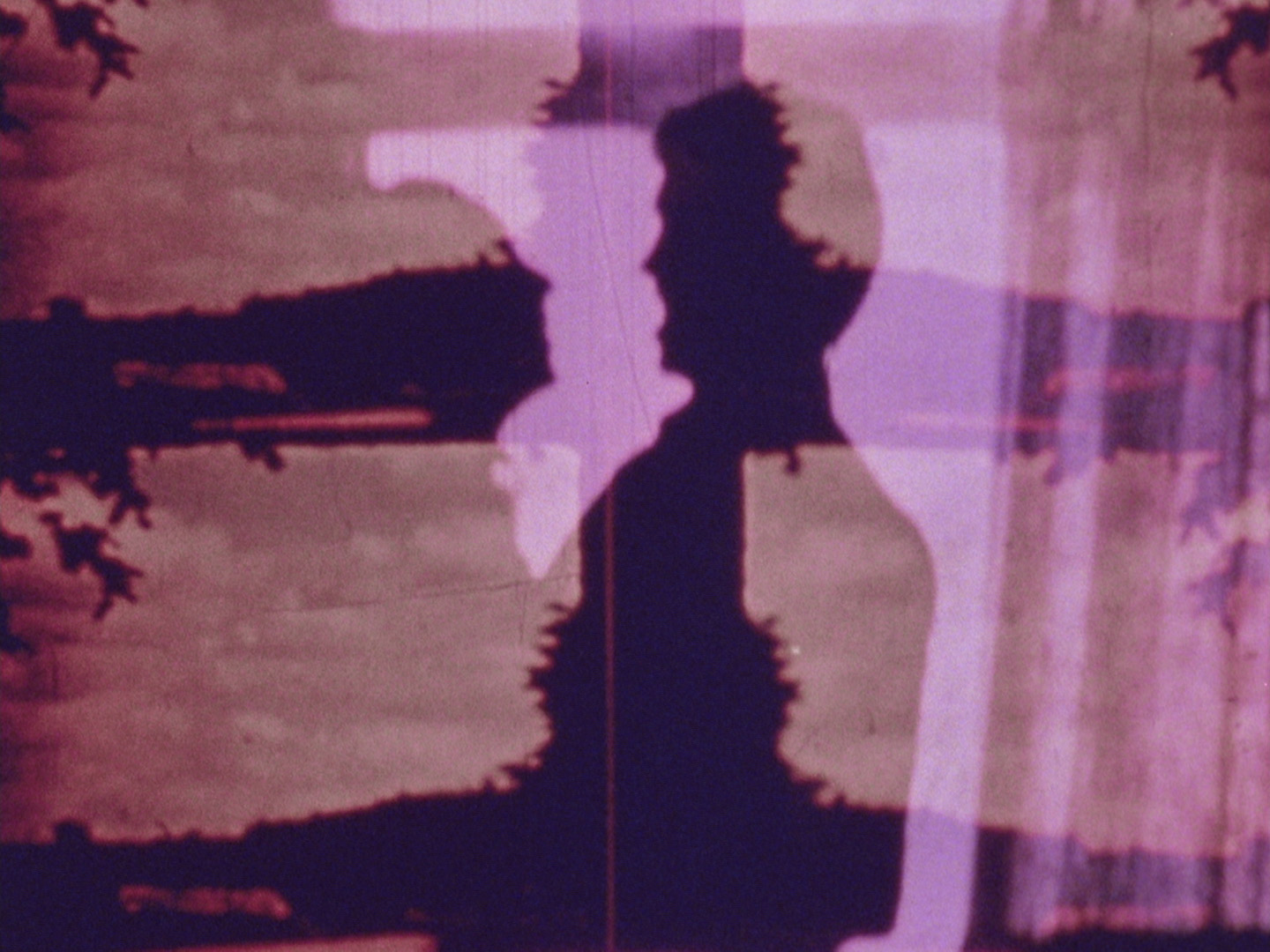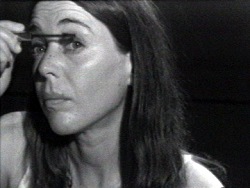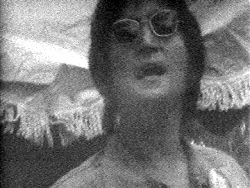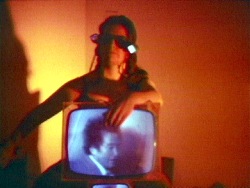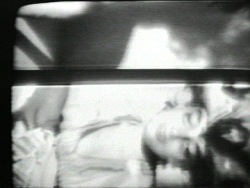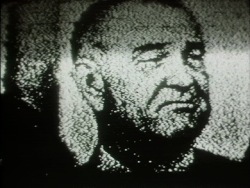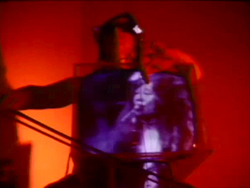
CIRCA 1971
Early Video & Film from the EAI Archive at Dia:Beacon
CIRCA 1971
Early Video & Film from the EAI Archive at Dia:Beacon
Riggio Galleries
3 Beekman Street Beacon, NY 12508
CIRCA 1971
Early Video & Film from the EAI Archive at Dia:Beacon
Riggio Galleries
3 Beekman Street Beacon, NY 12508
CIRCA 1971
Early Video & Film from the EAI Archive at Dia:Beacon
Riggio Galleries
3 Beekman Street Beacon, NY 12508
Works
Ant Farm's Dirty Dishes is a freewheeling portapak time capsule that captures the collective spirit of Ant Farm's life and work in California in the early 1970s. The artists use the early portable camera as an interactive sketchbook. Writes Chip Lord: "It's an anthology of clips from the first year of living with a Portapak and it gives a fairly good representation of the way we lived in those days - collectively, loosely, improvisationally."
With a striking economy of means, Ramos enacts a close-up performance action: he blows up a balloon with his nostril until it bursts in his face. He then repeats this action with his other nostril. Alternating nostrils, he continues to blow up the balloon until it bursts. With each iteration his exhaustion visibly increases; he gasps for breath, almost to the point of passing out.
In Centers, Acconci faces the camera, his head and arm in close-up as he points straight ahead at his own image on the video monitor, attempting to keep his finger focused on the exact center of the screen. In pointing at the image of himself, Acconci is also pointing directly at the viewer — an action that is paradigmatic of the psychological dynamic of Acconci's work in video.
A family is observed watching television. The viewer becomes the object of the family's gaze, as much as the family is the object of the viewer's gaze. Writes Roswitha Mueller, "The Electronic and the Real gazes cross without interacting." Facing a Family was originally broadcast on Austrian Network Television.
The landmark documentary Four More Years is an iconoclastic view of the American electoral process, captured through TVTV's irreverent, candid coverage of Richard Nixon's 1972 presidential campaign and the Republican Convention in Miami. Using lightweight 1/2-inch portable video equipment, the...
In an ironic reference to body art, process art and performance, Baldessari challenges definitions of the content and execution of art-making. Performing with deadpan precision, he moves his hands, arms and entire body in studied, minute motions, intoning the phrase "I am making art" with each...
In this classic video verité documentary, Cort records a demonstration against the Vietnam War in Washington D.C. on May Day, 1971. Describing the event as "a day filled with moments of expectation and violence," he focuses on the dynamics of the demonstration and the police response. Armed with...
In Mumble, Benglis investigates an aesthetic of distraction that could only have emerged from the nascent field of video art. The piece portrays a monitor, and on it the image of another monitor, containing yet a third: recordings nested within recordings. Fixed cameras are trained on static...
This performance, at London's Lisson Gallery, documents Graham's project of psychologically restructuring space and time. Graham writes, "Two people who know each other are in the same space. While one predicts continuously the other person's behavior, the other person recounts (by memory) the...
In this harrowing performance, Ramos and the artist Lowell Darling are blindfolded, their hands and feet bound, and sealed into body-sized plastic bags. Over the course of 20 minutes, the men struggle to escape from the clear plastic bags. The real-time performance creates a palpable tension as the men writhe inside the bags. Ramos performed this piece at Cal Arts, shortly after he had been released from federal prison, where he had served 18 months for draft resistance during the Vietnam War.
The dissolution of a relationship unravels through visual and aural equivalences. Schneemann splits and recomposes actions of the lovers in a streaming montage of disruptive permutations: 8 mm is printed as 16 mm, moving images freeze, frames recur and dissolve until the film bursts into flames,...
Raindance's Media Primers reflect the group's iconoclastic theories of television and video, and their engagement with alternative and mass media, pop culture and the counter-culture. The themes addressed — media manipulation, the camera's role in modifying individual behavior — illustrate their experimentation with the technological and conceptual underpinnings of 1/2-inch portable video.
The artist explores make-up as a traditional mode of self-expression, using it to find a representation of herself with which to face the world.
Studies features the Vasulkas' seminal explorations of electronic image manipulation. These exercises trace the development of the Vasulkas' techniques of image and sound processing.
Nancy Holt and Robert Smithson collaborated on this seminal film, which viscerally confronts issues of perception and process. The action of the film is direct: Holt walks through the tall grasses of a swamp while filming with her Bolex camera, guided only by what she can see through the camera lens and by Smithson's verbal instructions. The viewer experiences the walk from Holt's point of view, seeing through her camera lens and hearing Smithson's spoken directions. Vision is obstructed and perception distorted as they stumble through the swamp grasses.
This video journal is an informal time capsule of the downtown cultural and artistic milieu in New York. In Part 1, Clarke is an active voice behind the camera as she documents a party given by John Lennon and Yoko Ono, with guests that include Andy Warhol and Jack Nicholson. In Parts 2 & 3, Arthur C. Clarke performs a celestial experiment with a video camera on the roof of the Chelsea Hotel, while influential theologian Alan Watts creates "an exercise in Zen."
TV Cello Premiere is a silent film documentation of Charlotte Moorman in her first performance on Paik's eponymous TV Cello at the Bonino Gallery in New York in 1971.
Vertical Roll is a seminal work. In a startling collusion of form and content, Jonas constructs a theater of female identity by deconstructing representations of the female body and the technology of video. Using an interrupted electronic signal — or "vertical roll" — as a dynamic formal device,...
Video Commune (Beatles Beginning to End)
Nam June Paik and Jud Yalkut
1970-92, 8:36 min, color, silent, 16 mm film on video
Video Commune is Jud Yalkut's free-form documentation of Nam June Paik's first interactive television "performance" at the public television station WGBH in Boston. Subtitled "Beatles from Beginning to End," this was a live broadcast in which Paik created a freewheeling collage of recorded images, image-processing and Beatles music.
Video-Film Concert
Nam June Paik and Jud Yalkut
1966-72, 1992, 34:50 min, b&w and color, sound, 16 mm film on video
This restored collection of rare early collaborative works by Nam June Paik and Jud Yalkut is historically significant as well as remarkably prescient. Recorded between 1967 and 1972, these playful and improvisational "video-films" reveal insights into the evolution of Paik's work in video, performance and installation.
